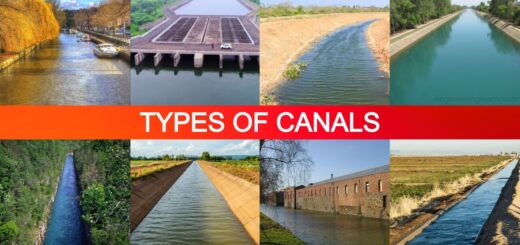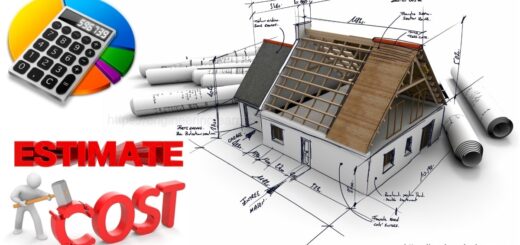Plaster (Building Construction): Advantages & Disadvantages [Explained with Complete Details]
![Plaster (Building Construction): Advantages & Disadvantages [Explained with Complete Details]](https://engineeringlearn.com/wp-content/uploads/2023/03/Plaster-1024x539.jpg)
Plaster Introduction
8 Types of Plaster (Building Construction) – Advantages & Disadvantages [Explained with Complete Details]: – There are several kinds of plaster out there, all of which have various applications and mixing strategies. Thus, on the off chance that you are into building and construction, art, or even medication, we will look into the range of plaster on offer, alongside all that you want to be familiar with them. Subsequently, it is believed that toward the finish of this, you’ll have the option to unravel every one of the various kinds of plasters to complete the undertakings at the end productively.
What is Plaster?
This is a fundamental question that is important to figure out the nature of the subject matter. At the point when we hear the word plaster, we frequently consider a plaster, leveling bar, trowel, and loads of dirt. Meanwhile, plaster has turned into a conventional term that covers all that can be put on the wall, from 20 mm lime-concrete base plaster to 3 mm clay filler. Basically, building material is utilized to coat and safeguard internal walls and roofs, and at times, is even utilized on outside walls.
Interestingly, the specialty of plastering has been around for a long time, with civilizations as old as the Egyptians utilizing it. These days, it isn’t utilized however much a decorative tool yet is ever-present in modern homes.
What is a Plaster Undercoat?
By and large, an artist will secure brushes and paint, however above all, the canvas on which the painting will be displayed must be secured. In light of that, consider an undercoat as a canvas on top of which you can make a few pretty special designs for your walls or different surfaces.
Subsequently, undercoats are the base on which all the other things are constructed, and they are so significant in light of this function. Subsequently, the blending and utilization of an undercoat are crucial and should be done in the right way. This is on the grounds that, assuming the blend is off-base, or it isn’t applied as expected, all the other things based on top of it will likewise be inadequate.
Likewise, with other mixing methods, you ought to mix a few clumps prior to choosing the one you need. There are a few kinds of undercoat plasters, some of which you have inspected, including, browning, bonding, and extreme coat plaster. Besides, you really want to take note that plastering over large areas is difficult, which is the reason specialists prompt that you section the wall into bits and approach it slowly and carefully. This is to ensure that the plaster is equally applied and isn’t rough. When you get the undercoat right, you are ready to move on, and you should rest assured about a smooth wall when you are finished.
What is a Plaster Topcoat?
Assuming the undercoat is the canvas or material that you draw on, the topcoat is the actual painting, and it is the final layer of coating essential before you paint over the wall. Because of this, the mix is normally smoother than undercoats, and it includes more water than the others. In this way, in a three-coat framework, the topcoat, also called the completion coat, happens after the scratch and undercoat.
Furthermore, it is important to blend the topcoat appropriately as it affects the smoothness of the wall. Additionally, of note is that because of their composition, finish coats should be blended accurately, and it is preferable to blend manually than to utilize mechanical tools. Moreover, topcoats dry up significantly quicker than undercoats, and it is consequently that mixing them can be precarious as once it dries up, it must be thrown away and can’t be utilized anymore. Some examples of topcoats incorporate Dri-coat, thistle, and carlite plaster.
Types of Plaster
As referenced before, there are a bunch of plasters accessible, which are all utilized for different purposes. Here, we will get a brief of each one, too things to focus on.
1. Browning Plaster
This is an undercoat plaster utilized as a base for paint and other enriching endeavor. It is basically the same as bonding plaster however is generally valuable with additional absorbent surfaces. Moreover, they can be utilized to build up walls and are exceptionally useful in construction. All things considered, most builders apply browning plaster at around 8mm thickness for ceilings and 11mm thickness for walls.
Hence, a finish coat is added to the proceedings prior to anything else is being done to the walls. In the interim, the drying time for browning plaster is reliant upon the climate and the season, yet to be safe, most specialists and enthusiasts will advise you to leave it for a day or so prior to returning to deal with it.
2. Thistle Plaster
Next up is thistle plaster; which, rather than bonding and browning, is a finish coat, and that implies it comes up toward the finish of the plastering process. It is one of the most well-known sorts of finish plasters, as it is extremely flexible and convenient to utilize. Thus, it is favored for small repair jobs and other normal tasks that require plaster.
Discussing about versatility, thistle plaster can be utilized on plasterboard, or as a feature of a two-coat system. Likewise, it very well may be applied manually or with a mechanical tool, which adds to its allure. One more reason for its boundless ubiquity is its quality, as it works really hard and gives you a smooth surface on which you can apply different decorative finishes.
3. Bonding Plaster
Like browning plaster, bonding plaster is additionally viewed as an undercoat on which different things are added. Notwithstanding, because of its versatility, it is more popular for building as it has a sensational sticking ability. Hence, it is by and large utilized on a wide range of surfaces, in any event, engineering blocks, and cement. Likewise, it doesn’t rely upon the absorption levels of a surface to be effective, which makes it the ideal wall plaster. Furthermore, very much like browning plaster, bonding is normally applied at 8mm for ceilings and 11mm for walls.
As referenced before, it is an undercoat plaster, and that implies it is the primary coat to be applied to a recently patched wall. Subsequently, when it is leveled off, it is set apart with a nail to provide a ‘key’ to the topcoat to follow.
4. Hard-wall Plaster
Hard-wall plaster is an undercoat plaster that is generally utilized with masonry backgrounds like bricks and medium-density blocks. Very much like the other undercoat plasters, hard-wall is an optimal base to work with; all the more so, its simple application is one reason it is so popular. All things considered, it is advised that you utilize hard-wall on structures looking great as a poor or disintegrating wall could cause the plaster to crack.
5. Carlite Plaster
Very much like thistle plaster, carlite is additionally a finish coat that is typically utilized on top of a background. Likewise, carlite plaster is versatile or flexible and can be utilized on different surfaces, after which you can then add decorative finishes.
Be that as it may, the fundamental difference between carlite and thistle is the setting time with the former taking about three hours to set while the last option is a great deal faster and finds a time to set. Accordingly, thistle is for the most part more popular, however, carlite is likewise really fair with regards to durability. In this way, carlite is scratch resistant and typically has a strong impact.
6. One Coat Plaster
Dissimilar to different plasters discussed that fall comprehensively within the classification of undercoat, or finish plasters, one coat plasters are something of a Swiss armed knife. This implies that it can go about as both an undercoat and a completion. Hence, it is an exceptionally well-known plaster variant as it contains fewer steps and is unimaginably simple to utilize. All the more, comprising of the conventional gypsum material, one coat plaster has a thicker consistency, which enables it to work with thicker layers than different variants.
Moreover, it is not difficult to apply and should be possible by hand or with the assistance of mechanical tools. Besides, one coat plaster saves a lot of time as it doesn’t require a scratch coat or some other step before use. In conclusion, one coat is typically utilized for repair jobs as getting a smooth completion over more modest areas is much simpler.
7. Dri-coat Plaster
Dri-coat plaster is somewhat different from the others as it is utilized for plastering after the installation of another damp-proof course (DPC.) Additionally, Dri-coat plaster prevents the movement of hygroscopic salts from the background to the surface. This is a fundamental capability as hygroscopic salts will more often than not retain atmospheric dampness, which can prompt damp walls. Subsequently, Dri-coat plaster assists with safeguarding walls and keeping them in pristine condition.
All things considered, Dri-coat isn’t recommended on frozen backgrounds as this influences its proficiency. Essentially, it does priceless little to diminish the spread of the impact of fire, and thus, it is advised that you ensure that the plaster isn’t exposed to outrageous temperatures.
8. Tough Coat Plaster
It is an undercoat plaster that, as the name suggests, is exceptionally tough and can take on conditions that different kinds of plaster can’t deal with. For instance, it gives some protection from fire, and keeping in mind that it isn’t advised to utilize on frozen walls, it can in any case make a good showing. What’s more, it has strong impact resistance and is an extraordinary base for masonry foundations.
Advantages of Plasters
A) Plaster Walls are Thicker and More Solid
Plaster provides a strong area of strength for a durable surface that can be painted over to add an exceptional touch of style to a wall. Plaster forestalls moss growth, so you may securely cover up it without worrying about over demolishing your walls. On the off chance that the wall is built with sufficient plaster and is adequately thick, it can likewise act as a soundproofing medium.
B) The Elegance of a Changed Appearance
In the event that you want your society or property should look more refined, plaster is an extraordinary choice of material. Plaster has been utilized for quite a while, still utilized now by those who believe their homes or buildings should have an antique appearance.
C) Cleaning up Plaster is a Breeze
For all its durability, Plaster is surprisingly easy to clean. The Plaster’s surface doesn’t crack or break, so standard cleaning won’t chip or scratch it over the long haul. In spite of its life span being used and the numerous benefits it offers, plaster is still broadly utilized as a wall coating in today’s time.
D) Resilience
At the point when plaster is accurately blended and coated, it creates a wall surface that is more stronger than drywall and less vulnerable to damage over the long run. When the water in the plaster combination evaporates and the blend is heated, a chain reaction begins that forms solid connections within the combination. Plaster normally stands up better to knocks and different types of damage. Lath or other support placed behind the plaster can assist with expanding its durability.
Disadvantages of Plaster
A) It’s Not Always Easy to Paint on Plaster
Regardless of being an excellent medium for the task that needs to be done, painting on plaster can be troublesome because of its permeable surface. Plaster is enduring or long-lasting and extraordinary for use as a painting medium, despite the fact that you might require multiple coats to get the desired effect. Plaster is in many cases a decent decision, yet painting it could require somewhat more investment and exertion.
B) Frustratingly Impossible to Fix
The worth of plaster reclamation rises since it very well may be hard to find an expert plaster firm. To do numerous fundamental repairs, a significant amount of plaster should be taken out. At the point when plaster disintegrates or cracks because of movement or a hard hit, it should be carefully eliminated by cutting and scratching to forestall further damage to the surrounding, undamaged wall. Supplanting any damaged lath or backing is additionally essential. Plaster fades over the long haul, so in the event that you don’t repaint the entire wall after repairs, the new patches will stand out.
C) Installation
Wallboard dust is created and produced when it is cut or sanded. It can require a few days to smooth drywall since the joint compound needs time to dry in between coats. Solely after being mixed in with water plaster become a dusty powder. There is compelling reason need to sand, and extra costs can be applied before the main coating dries. Plaster walls are less labor-intensive and cleaner than drywall, but they still require expertise and practice to install over a wood lath or steel mesh backing.
D) Cost
Regardless of the more prominent time and effort associated with drywall installation and culmination, plastering is in many cases more costly. Plasterers often charge more than average because of the specialized skills they have acquired via training. Veneer plaster requires just a solitary finishing coating of plaster to be placed on top of a backing board, decreasing expenses contrasted with traditional a few coat surfaces. Notwithstanding being less durable than drywall, facade or veneer surfaces are by and large estimated in much the same way.
Conclusion
While the results or outcomes are generally magnificent, plastering is perhaps one of the most chaotic works out there, and you ought to realize this prior to embarking on it. In the event that you need to Do-It-Yourself, ensure that you clear the room of all furnishings and different fixtures as there will be a great deal of dust hanging around. Additionally, it is advised that you blend the plaster in an outside region, so you don’t inhale excess dust.
Notwithstanding, assuming the mixing should be done indoors, ensure that you open up all the entryways and windows. Then again, in the event that you decide to engage an expert, likewise ensure that you clear out the room, not exclusively to ensure that your furniture isn’t stained yet in addition to make sufficient space for the plasterer to move freely and easily. Aside from that, most expert plasterer services will accompany building paper and dust sheets to ensure that they do their part in keeping your home as clean as conceivable thinking about the situation.
Content Source: – homehow, hpconstructions
Image Source: – buildinganddecor, homebuilding













